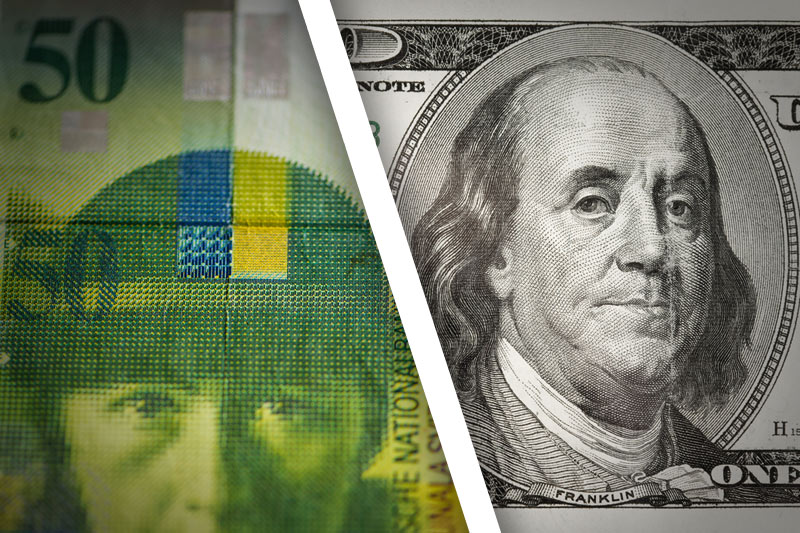Investing.com - The U.S. dollar rose to two-week highs against the Swiss franc on Wednesday, as growing expectations for a near-term end to the Federal Reserve's stimulus program supported the greenback.
USD/CHF hit 0.9370 during European morning trade, the pair's highest since August 2; the pair subsequently consolidated at 0.9371, gaining 0.42%.
The pair was likely to find support at 0.9274, the low of August 2 and resistance at 0.9416, the high of July 12.
Demand for the greenback remained supported after U.S. retail sales data on Tuesday reinforced the view that the economic recovery is strong enough for the Fed to begin phasing out its asset purchase program later this year.
The Commerce Department said that retail sales rose for the fourth successive month in July, rising 0.2%, while core retail sales, which exclude automobile sales, rose at the fastest pace in seven months, climbing 0.5%.
In Switzerland, data earlier showed that the ZEW economic expectations index rose to 7.2 in July from a reading of 4.8 the previous month, hitting the highest level since April. Analysts had expected the index to rise to 10.0 last month.
A separate report showed that Swiss producer price inflation was flat in July, confounding expectations for a 0.2% rise, after a 0.1% uptick the previous month.
The Swissie was lower against the euro with EUR/CHF rising 0.35%, to hit 1.2416.
Also Wednesday, Eurostat said the euro zone’s economy expanded by 0.3% in the three months to June. Economists had expected quarter-on-quarter growth of 0.2%.
Separately, preliminary data showed that France’s economy expanded 0.5% in the second quarter, following two consecutive quarters of contraction. Economists had forecast growth of 0.2% quarter-on-quarter.
Germany’s economy expanded by 0.7% after growing 0.1% in the first quarter. Economists had forecast quarter-on-quarter growth of 0.6%.
Later in the day, the U.S. was to release data on produce price inflation.
Later in the day, the U.S. was to release data on produce price inflation.
USD/CHF hit 0.9370 during European morning trade, the pair's highest since August 2; the pair subsequently consolidated at 0.9371, gaining 0.42%.
The pair was likely to find support at 0.9274, the low of August 2 and resistance at 0.9416, the high of July 12.
Demand for the greenback remained supported after U.S. retail sales data on Tuesday reinforced the view that the economic recovery is strong enough for the Fed to begin phasing out its asset purchase program later this year.
The Commerce Department said that retail sales rose for the fourth successive month in July, rising 0.2%, while core retail sales, which exclude automobile sales, rose at the fastest pace in seven months, climbing 0.5%.
In Switzerland, data earlier showed that the ZEW economic expectations index rose to 7.2 in July from a reading of 4.8 the previous month, hitting the highest level since April. Analysts had expected the index to rise to 10.0 last month.
A separate report showed that Swiss producer price inflation was flat in July, confounding expectations for a 0.2% rise, after a 0.1% uptick the previous month.
The Swissie was lower against the euro with EUR/CHF rising 0.35%, to hit 1.2416.
Also Wednesday, Eurostat said the euro zone’s economy expanded by 0.3% in the three months to June. Economists had expected quarter-on-quarter growth of 0.2%.
Separately, preliminary data showed that France’s economy expanded 0.5% in the second quarter, following two consecutive quarters of contraction. Economists had forecast growth of 0.2% quarter-on-quarter.
Germany’s economy expanded by 0.7% after growing 0.1% in the first quarter. Economists had forecast quarter-on-quarter growth of 0.6%.
Later in the day, the U.S. was to release data on produce price inflation.
Later in the day, the U.S. was to release data on produce price inflation.
